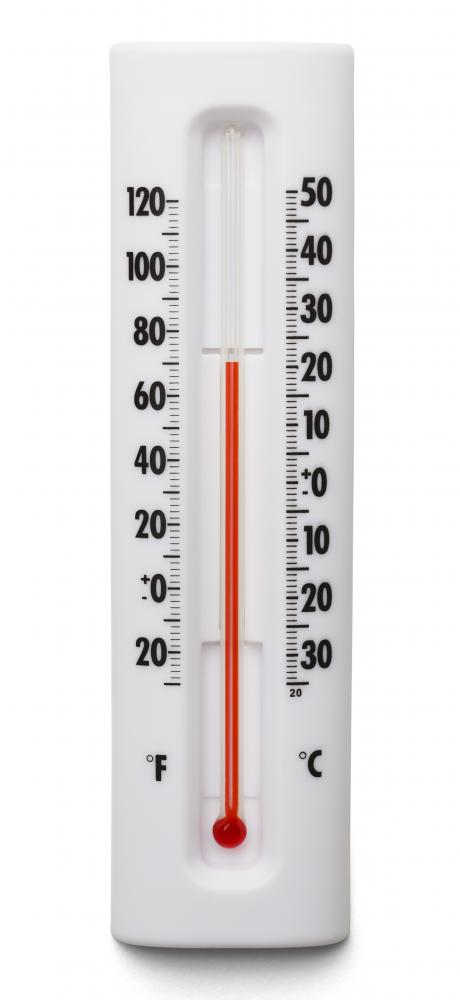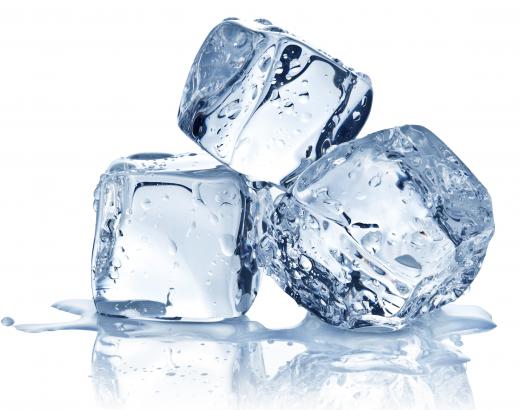What Is the Difference between Fahrenheit and Celsius?
The main difference between Fahrenheit and Celsius is their relative values for both the freezing points and boiling points. This causes nearly all other temperature points on the thermometer to be different as well. Celsius is considered a world standard because of its ease of use, but a significant number of countries still operate on the Fahrenheit system for many applications, such as weather information and cooking. It should be noted that the reference to freezing and boiling is for water.
Fahrenheit and Celsius both are easily understandable, but the freezing and boiling points are harder to remember for Fahrenheit, simply because they are so awkwardly placed on the scale. This is the main reason the Celsius scale has come into widespread use.

The freezing points on these scales are generally better known than the boiling points, at least to the common person. This is because both are very important weather-related points. On the Celsius scale, the freezing point is listed as 0°. The freezing point on the Fahrenheit scale is 32°.
Likewise, the boiling points are also different, with the easier number being 100°, which is the boiling point on the Celsius scale. On the Fahrenheit scale, the boiling point is 212°. Given the rounded number for Celsius, it can help make many calculations much easier when considering the boiling point.

While the advantages often favor the Celsius system, there is a major disadvantage to the Celsius scale. The actual temperature variation between natural number points is greater on the Celsius system, simply because there are fewer natural number points between freezing and boiling. Therefore, to be more exact in the actual temperature, decimals and fractions become more important in the Celsius system.

Converting Fahrenheit and Celsius to each respective scale requires the use of a simple mathematical formula. To convert Celsius to Fahrenheit, (add number)°C x 9/5 + 32 = (result)°F. To convert Fahrenheit to Celsius, (add number°F-32) x 5/9 = result°C.
There are also a number of calculators online easily found by doing a search that will automatically convert one temperature to the other.
AS FEATURED ON:
AS FEATURED ON:















Discussion Comments
ºF is a human temperature scale. The numbers have more meaning. It would take someone of low intelligence to not remember water begins to freeze at 32 ºF and begins to boil at 212 ºF ( difference of 180 ºF). Fahrenheit was not invented based on the properties of water. Daniel Gabriel Fahrenheit created a 1:1:1 mixture of water, ice, and salt (ammonium chloride) to create the lowest possible temperature he could in his lab equivalent to a very cold winter day. He then based the average human body temperature at 100 ºF. After properly marking his new temperature scale, water was found to freeze and boil at the two temperatures I already specified.
ºC was based on water from the get-go. Anders Celsius invented his temperature scale with 100 ºC as the freezing point of water and 0 ºC as the boiling point of water. He died not long after he invented his temperature scale which was soon reversed to what it is today.
Celsius has a major flaw since it is based on water and that is there are not enough degrees of separation. 0-40 ºC covers the same range as 32-104 ºF. These are the most common weather temperature ranges. Celsius has 40 places and Fahrenheit has 72 places. This makes using decimals for accuracy on Celsius vital. The same decimals applied to Fahrenheit make it even more accurate.
0 ºC is too common in the temperate zone of Earth where most of us live. 0 ºF (-17.8 ºC) is possible but it is somewhat rare. If you go outside when it is 0 ºF and you are not properly clothed, you will die. 0 ºC is survivable with a T-shirt, blue jeans, socks, and shoes (but it is not that comfortable). The point is that Fahrenheit has more meaning at 0 than Celsius does and it is rare for Fahrenheit to be in the negative numbers for measuring the weather temperature in the temperate zone.
Basing temperature on water is stupid. Water's freeze and boil temperatures would change at different places and at different atmospheric pressures on Earth and would be even further changed on different planets like Mars and Venus.
For scientists needing to know the temperature compared to absolute 0, instead of using Kelvins (based on Celsius), they could use Rankines (based on Fahrenheit). 0 K is equal to 0 ºR. The difference between Celsius and Kelvin is 273.15. The difference between Fahrenheit and Rankine is 459.67.
The only creatures interested in temperature measurement are humans. It makes sense to base a temperature scale on what humans feel like Daniel Gabriel Fahrenheit successfully did instead of solely on water like Anders Celsius did.
---
BTJ
is fahrenheit scale a nonlinear graph and why is it interfering with Celsius at some values?
@spasiba, as an American currently living in Europe, I also notice that Celsius temperatures just feel much colder. When I first read on a thermometer that the temperature was 12 degrees, I worried that it was very cold until I realized, after using a fahrenheit and celsius converter, that 12 degrees Celsius is actually nearly 55 degrees Fahrenheit. Likewise, using your example, 90 degrees Fahrenheit sounds much warmer than 30 degrees Celsius. The relationship between Fahrenheit and Celsius is complicated to remember, and the Fahrenheit and Celsius formula is also complicated, for me at least, to memorize.
For the average person, it gets a little complicated if you are using Fahrenheit for example and you try to convert it into Celsius.
You just do not have a good sense of what the numbers mean.
I know that 90 degrees Fahrenheit is hot, even a bit uncomfortably hot, but I would not have a good feel for the temperature if somebody tells me it is 30 degrees Celsius. Without actually doing the calculation I would not be sure how hot 30 degrees really is.
I am sure the same holds true the other way around. It all depends on what we are accustomed to.
Post your comments